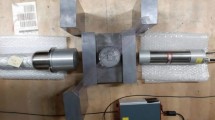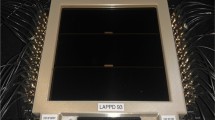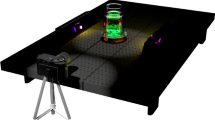Abstract
Linear alkyl benzene-based liquid scintillators (LSs) have been extensively used as targets for neutrino detectors in recent decades owing to their environmentally friendly properties, high light yield, and cost efficiency. Neutrino events are typically reconstructed from scintillation events observed by photomultiplier tubes (PMTs) attached to the detector. A comprehensive understanding of the LS response is required for interpreting reconstructed neutrino events during detector operation. In this study, we investigate the properties of scintillation events such as light yield, waveform, and wavelength shift of the emitted scintillation light at various concentrations of fluor dissolved in the LS. The light yield, waveform, and wavelength shift exhibit a nonlinear relationship with fluor concentration, complicating the determination of fluor concentration from the observed characteristics of the scintillation events. We employ a convolutional neural network (CNN) to model this nonlinear relationship between fluor concentration and LS properties. The CNN learns the distinctive features of the scintillation events from observed waveforms and the relative ratio of the light yield below 425 nm to the total light yield detected by a PMT at different fluor concentrations. The trained CNN was able to distinguish the scintillation events with different 2,5-diphenyloxazole and 1,4-bis(2-methylstyryl)benzene concentrations according to the observed waveform and relative wavelength shift. The classified scintillation events for each LS sample exhibited clear features for the different LS concentrations, emphasizing the discriminative capability of the trained CNN. This research presents the first demonstration of LS fluor concentration discrimination using machine-learning techniques in PMT-based detectors.









Similar content being viewed by others
References
V. Albanese et al., J. Instrum.Instrum. 16, P08059 (2021)
J. Alonso et al., Phys. Rev. D 105, 052009 (2022)
F. An et al., J. Phys. G 43, 030401 (2016)
S. Fukuda et al., Nucl. Instrum. Methods Phys. Res. A 501, 418 (2003)
N.-R. Kim et al., Sensors 23, 2728 (2023)
Y. Zhang et al., Nucl. Instrum. Methods Phys. Res. A 967, 163860 (2020)
A. Abusleme et al., Nucl. Instrum. Methods Phys. Res. A 988, 164823 (2021)
W. Beriguete et al., Nucl. Instrum. Methods Phys. Res. A 763, 82 (2014)
C. Buck et al., J. Instrum.Instrum. 14, P01027 (2019)
J.S. Park et al., Nucl. Instrum. Methods Phys. Res. A 707, 45 (2013)
Y.S. Park et al., Rev. Sci. Instrum. 89, 043302 (2018).
B.R. Kim et al., J. Radioanal. Nucl. Chem.Radioanal. Nucl. Chem. 310, 311 (2016)
C. Buck et al., J. Phys. G 43, 093001 (2016)
F.P. An et al., Phys. Rev. D 95, 072006 (2017)
S. Seo et al., Phys. Rev. D 98, 012002 (2018)
D. Adey et al., Phys. Rev. Lett. 121, 241805 (2018)
F. An et al., Phys. Rev. Lett. 130, 161802 (2023)
H.-t. Chen et al., (2014). arXiv:1409.1298
J. Kim, et al., Separation of the 235U and 239Pu Prompt Energy Spectra in NEOS-II, in J. Phys. Conf. Ser. (IOP Publishing2021), p. 012139
M. Apollonio et al., Phys. Lett. B 466, 415 (1999)
Q. Liu et al., J. Instrum.Instrum. 13, T09005 (2018)
Z.-Y. Li et al., Nucl. Sci. Tech.. Sci. Tech. 32, 49 (2021)
M. Agostini et al., Nature 587, 577 (2020)
J. Choi et al., Nucl. Instrum. Methods Phys. Res. A 810, 100 (2016)
J. Park et al., Prog. Theor. Exp. Phys. 2021, 063C01 (2021)
M. Anderson et al., J. Instrum.Instrum. 16, P05009 (2021)
D.R. Onken et al., Mater. Adv. 1, 71 (2020)
High Performance OD 4 Shortpass Filters, (2022) https://www.edmundoptics.co.kr/f/high-performance-od-4-shortpass-filters/13534/
Photomultiplier tubes and assemblies, (2009) http://www-eng.lbl.gov/~shuman/NEXT/MATERIALS&COMPONENTS/High_energy_PMT_TPMO0007E02.pdf
H.-G. Lee et al., Prog. Theor. Exp. Phys. 2023, 053C01 (2023)
H.-H. Xu et al., Nucl. Sci. Tech.. Sci. Tech. 28, 121 (2017)
S. Kiranyaz et al., Mech. Syst. Signal Process. 151, 107398 (2021)
D.-A. Clevert et al., (2015). arXiv:1511.07289
A. Paszke et al., (2019). arXiv:1912.01703
D.P. Kingma et al., (2014). arXiv:1412.6980
Acknowledgements
This study was supported by grants awarded by the National Research Foundation (NRF) of the Korean Government (2022R1A2C1006069, 2022R1A5A1030700, and 2022R1I1A1A01064311).
Author information
Authors and Affiliations
Corresponding authors
Ethics declarations
Conflict of interest
None of the authors has any potential conflicts of interest.
Additional information
Publisher's Note
Springer Nature remains neutral with regard to jurisdictional claims in published maps and institutional affiliations.
Rights and permissions
Springer Nature or its licensor (e.g. a society or other partner) holds exclusive rights to this article under a publishing agreement with the author(s) or other rightsholder(s); author self-archiving of the accepted manuscript version of this article is solely governed by the terms of such publishing agreement and applicable law.
About this article
Cite this article
Kim, NR., Joo, KK. & Lee, HG. A feasibility study on distinguishing fluor concentrations in liquid scintillators from scintillation events observed by photomultiplier tubes using convolutional neural networks. J. Korean Phys. Soc. 84, 1–10 (2024). https://doi.org/10.1007/s40042-023-00981-w
Received:
Accepted:
Published:
Issue Date:
DOI: https://doi.org/10.1007/s40042-023-00981-w




